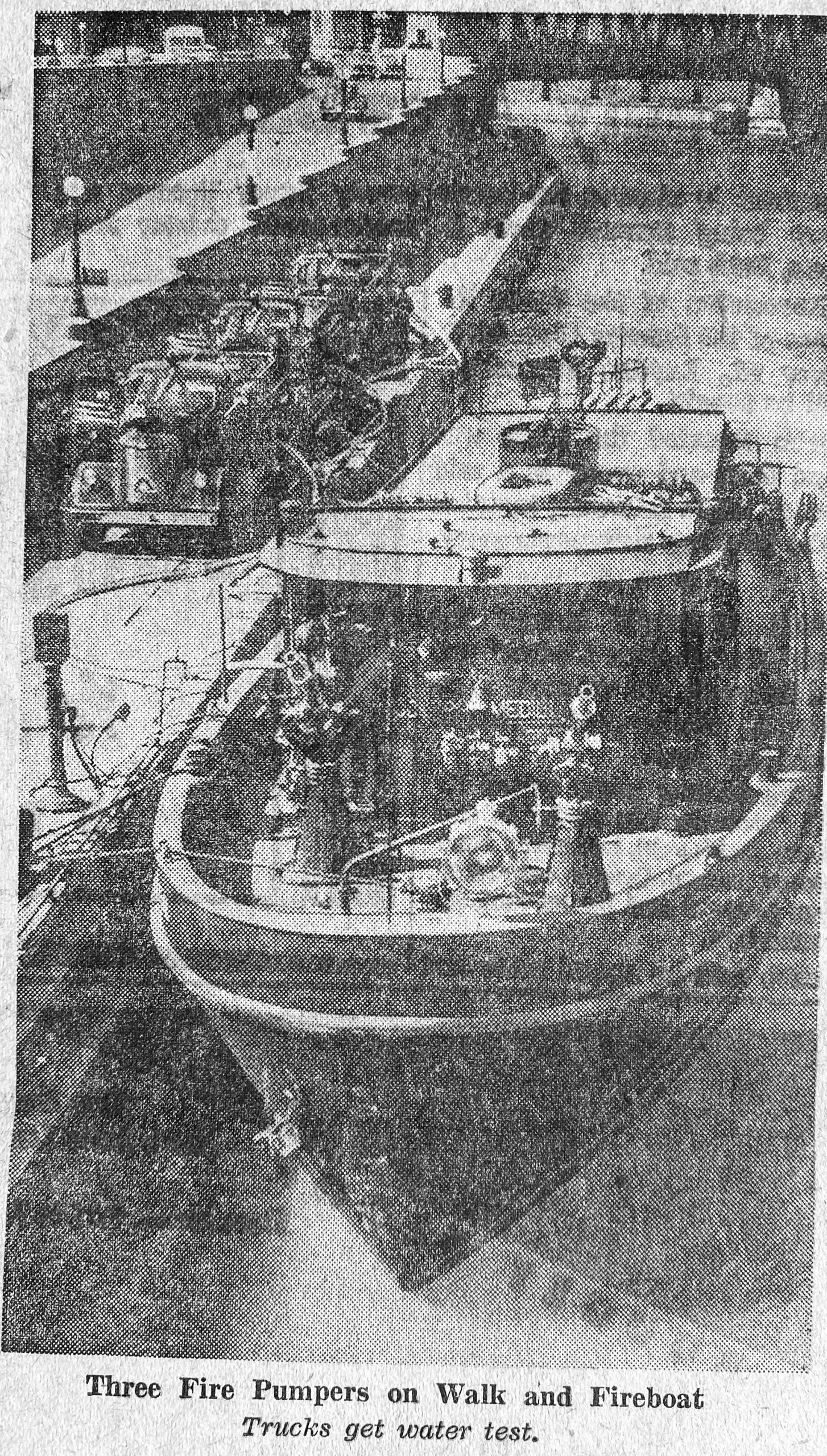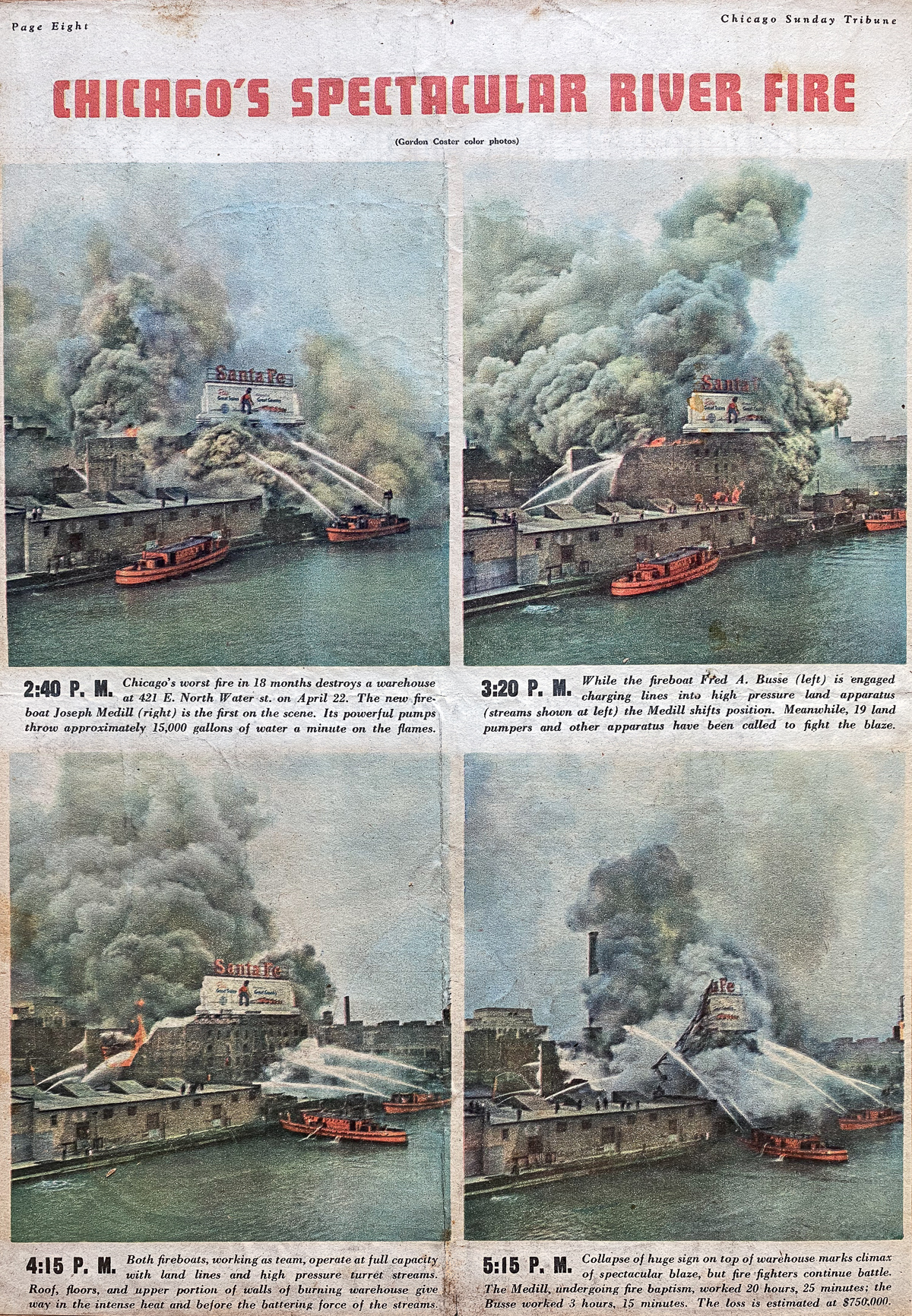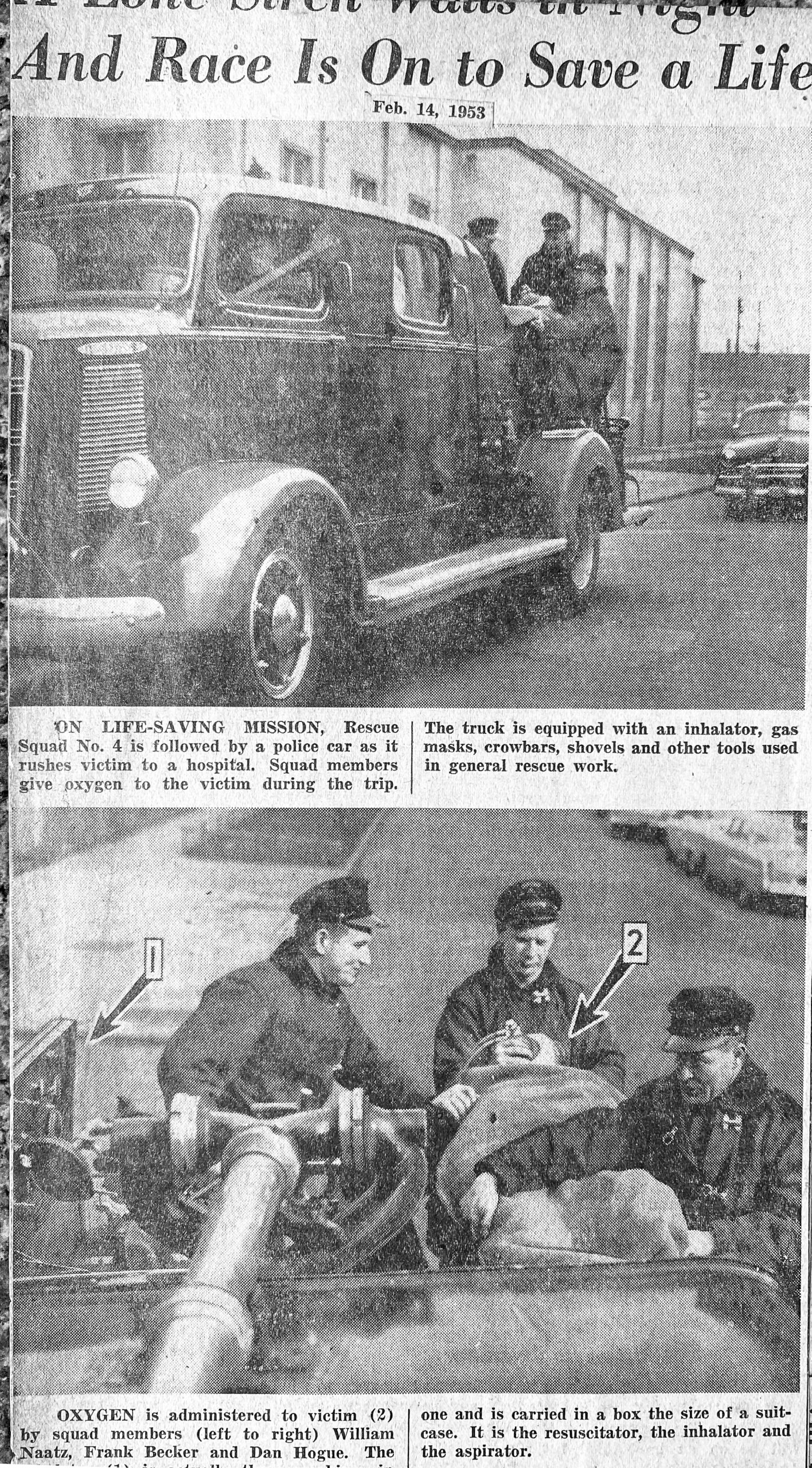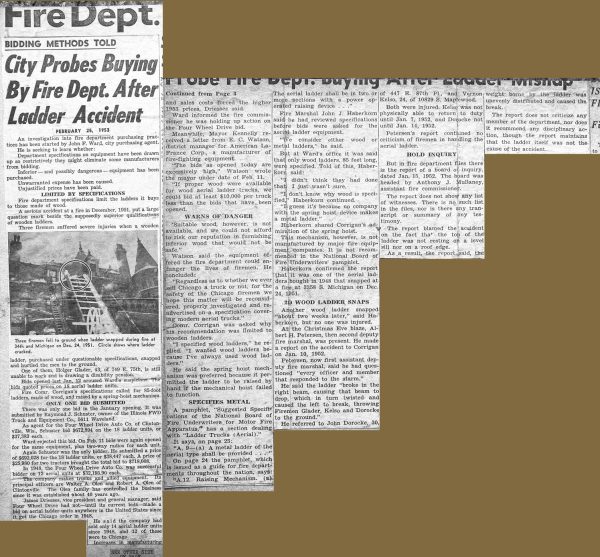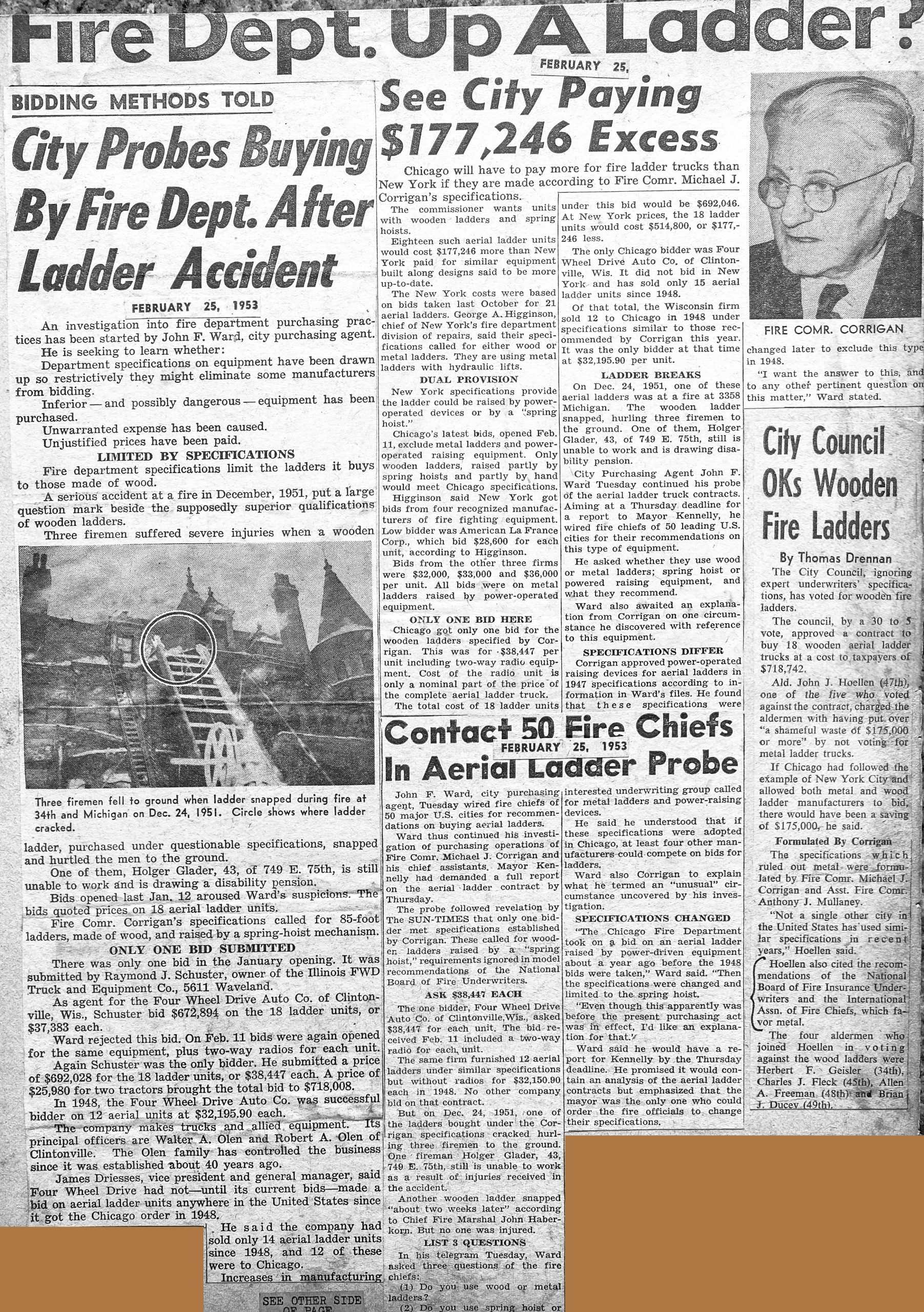From Steve Redick:
Posts Tagged Chicago Fire Department history
This from Larry Shapiro for #TBT
Came across this photo from a CFD 3-11 at 5730-36 N. Western Avenue, 7-18-80
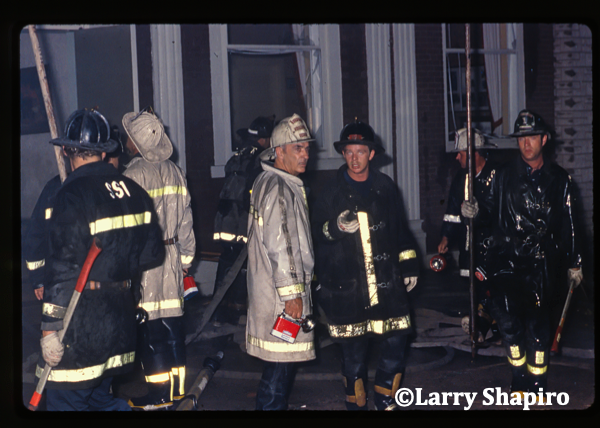
Larry Shapiro photo
From the Clintonville Chronicle:
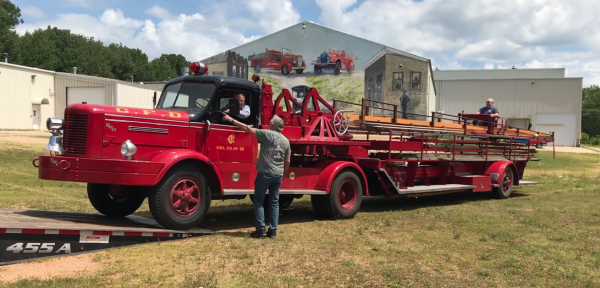
thanks Martin
This from Dennis McGuire, Jr.:
Engine 108’s old house on Lipps.
Excerpts from bookclubchicago.org:
Lake Effect Brewing Company’s planned move to a historic Jefferson Park firehouse has been scrapped, but the brewer still plans to open a taproom nearby.
Lake Effect Brewing partnered with developer Ambrosia Homes in 2016 with plans to open its first taproom and kitchen on the ground floor of a vacant firehouse at 4841 N. Lipps Ave. Last year, the city council agreed to sell the firehouse, built in 1906, to Ambrosia Homes for $1. Nine rental loft apartments were planned on the floors above. The $2.4 million development was scheduled to be completed by this summer, but the city has been slow to approve needed permits.
The location was approved for a zoning change in 2020 and a liquor sales ban was lifted along the street last year, but with the clock ticking on Lake Effect’s current space at 4727 W. Montrose Ave., the brewery owner said he couldn’t wait any longer. The brewery’s lease is up at the end of the year, and the timeline for the firehouse project remains uncertain. After looking at several empty buildings along the Northwest Side that had the correct zoning and liquor moratorium rules, Lake Effect secured an Avondale storefront this month and plans to move operations in the next few months.
The firehouse development is still moving forward despite delays and is waiting for the city to approve small rendering changes with hopes that construction can begin later this summer. The developer will add a third floor to the firehouse for apartments, which needs to be completed before any work can begin on the ground floor.
If construction can begin later this summer, tenants could move into the apartments by summer 2023.
From Phil Stenholm:
Another installment about the History of the Evanston Fire Department
HAPPY BIRTHDAY!
On May 1, 1975, the Evanston City Council accepted bids for a new 1,000 / 300 triple-combination pumper, with the exact same specifications as the two Howe pumpers purchased a year earlier. The new pumper would replace the 1952 Pirsch 1000 / 100 TCP (Engine 25) that was originally Squad 21 before being rebuilt as a TCP by General Body in 1966. Mack came in with the low bid of $53,725, beating out FWD Seagrave, Pirsch, and several other apparatus manufacturers for the contract. As expected, EFD Chief George Beattie specified that the new Mack pumper be painted “safety yellow,” just like the two Howe pumpers delivered in 1974 and 1975.
In addition, Chief Beattie received a new Plymouth sedan (fleet # 301) in 1975 that was painted red instead of “safety yellow,” with the chief’s 1973 Plymouth station wagon transferred to the platoon commanders as the new F-2 after a light bar was installed on the roof replacing the portable “Kojak light.” The former F-2 (1971 Dodge station wagon) was transferred to the Fire Prevention Bureau (FPB) to be used by the newly-created fire investigation unit (“arson squad”) that would be staffed each shift by a trained fire investigator. Firefighters Bob Schwarz, Pat Lynn, and Jim Hayes were appointed fire investigators by Chief Beattie. As part of the reorganization, one of the two FPB captain positions was eliminated after Capt. Joe Thill retired.
Also, as part of the contract resulting from the firefighters strike of February 1974, the average work-week for firefighters was reduced from 56 hours to 54 hours, with two new positions created in the EFD in 1975 that increased total membership from 100 to 102. One fireman would now be assigned each shift to cover for a fireman absent while on a “short day” (formerly known as a “Kelly Day”), with three firemen on each shift covering for vacations and sick leave. As a result, the de facto EFD minimum shift staffing was reduced from 28 to 27, with six three-man companies (the five engine companies plus Truck 22), two four-man companies (Truck 21 and Squad 21), and the shift commander (F-2).
Eighteen new firefighters were hired in 1974-75, including Samuel Boddie, Art Miller, Bill Betke, Jim Potts, Dave Lopina, Bob Hayden, Mike Adam, Don Gschwind, Thomas Simpson, Joe Hayes, Bob Wagner, Keith Filipowski, Ken Dohm, Tom Kavanagh, Milton Dunbar, Ward Cook, Jim Keaty, and Donald Williams. Also, Fireman James “Guv” Whalen was promoted to captain, firemen Harry Harloff and Ken Perysian retired after 23 years of service, and several other firefighters resigned.
On Wednesday, May 28, 1975, the Evanston Fire Department responded to a report of a fire in the rear storage yard of the Rust-Oleum Corporation at 2301 Oakton Street. A second alarm was struck immediately upon arrival of the first companies, and a MABAS box was eventually pulled, the first time the EFD had requested a MABAS box since the system was implemented in 1968.
At the peak of the fire, 19 2-1/2-inch hand lines, two deluge nozzles, one multi-versal, one ladder pipe from Truck 22, one street jack, and one deck gun from Squad 21 supplied streams that were played onto the storage yard and nearby exposures, as numerous 55-gallon drums full of paint exploded and were sent hundreds of feet into the air. Evanston police temporarily evacuated some of the residences to the east and north.
A 200,000-gallon water storage tank located at the southwest corner of Cleveland & Hartrey was supplied by a 24-inch feeder main that extended south from Church Street. The storage tank fed a 1,000-GPM pump owned by Rust-Oleum and operated by their company fire brigade, as well as the standard ten-inch and twelve-inch residential mains in the neighborhood. Engines from the Evanston, Skokie, Wilmette, Morton Grove, and Winnetka fire departments pumped water from numerous hydrants located to the east and north of the fire, including one hydrant at the dead-end of Cleveland Street at the C&NW RR Mayfair Division tracks 1/4 mile north of Rust-Oleum.
The conflagration was eventually surrounded, drowned, contained, and extinguished, but not before causing $775,000 in damage, making it the fourth highest loss from a fire in Evanston’s history up until that point in time. Only the fires at the American Hospital Supply Corporation (October 1963), the Rolled Steel Corporation (January 1970), and Bramson’s clothing store (October 1971) cause greater damage. If nothing else, the Rust-Oleum fire was certainly the most spectacular fire in Evanston’s history!
The next day — May 29, 1975 — the Evanston Fire Department celebrated its centennial. Although May 29, 1875, was the date that the EFD was legally established by ordinance, the actual genesis of the village fire department was January 7, 1873, when the 60-man volunteer Pioneer Fire Company of Evanston was accepted for service by the village board.
The purpose of the fire department ordinance of May 29, 1875 was not to create a firefighting force. The Pioneer Fire Company — renamed “Pioneer Hose Co. No. 1” in December 1874 when the Holly High-Pressure Waterworks was placed into service — already existed, and had existed for more than two years. Rather, the real purpose of the ordinance was to legally describe the method by which additional volunteer fire companies could be organized and accepted for service with the village going forward, since by May 1875 the C. J. Gilbert Hose Company was already in the process of being organized, chartered, and trained.
Once the C. J. Gilbert Hose Company was ready to be accepted for service, the ordinance needed to describe the relationship between the two hose companies. They might be rivals, but they could not be competitors. They had to work together for a common purpose. Also, the ordinance legally installed the fire marshal as chief of the fire department, with the two hose companies plus any other companies that might eventually be organized and accepted for service officially and legally under the command and direction of the fire marshal.
From Phil Stenholm:
Another installment about History of Evanston Fire Department
Prior to introduction of the 9-1-1 emergency telephone number, a person would have to either dial a specific seven-digit phone number that would connect them with the police or fire department (phone numbers not known to everybody) or else call the operator (dial “0”) and request to be connected with the police or fire department. By calling 9-1-1, a person could report a police, fire, or medical emergency without having to remember a seven-digit phone number or involve a telephone operator. Also, if a person was unable to speak, a 9-1-1 call could be “locked in” and traced. To help publicize the new program, “DIAL 9-1-1 TO REPORT AN EMERGENCY” bumper stickers were placed on all Evanston police and fire department vehicles in 1974.
The concept of the “paramedic” in a non-military, civilian environment, was introduced on a limited basis in several American cities in the late 1960’s, mainly to improve life-saving care to cardiac patients. In 1972, the NBC-TV series Emergency! provided the American public with a weekly glimpse into the world of Los Angeles County Fire Department paramedics, helping to spread the idea across the nation. What was unique about the Los Angeles County Fire Department’s paramedic program was that firefighters were cross-trained as paramedics.
In the Chicago area, fire departments with a tradition of providing ambulance service were the first to train paramedics and place Advanced Life Support (ALS) Mobile Intensive Care Unit (MICU) ambulances into service. The Niles Fire Department – which had provided ambulance service to its residents since 1946 – established a paramedic-program in 1973. The Skokie Fire Department placed two MICU ambulances staffed with paramedic firefighters into service in 1975, replacing its two 1969 Cadillac Basic Life Support (BLS) ambulances.
The Chicago Fire Department, which had provided ambulance service since 1928 and had 33 Cadillac and Pontiac BLS ambulances in service in 1974, placed their first two paramedic-staffed MICU ambulances into service in July 1974, with Ambulance 41 replacing Ambulance 1 at E1/T1 and Ambulance 42 replacing Ambulance 21 at E13. Five additional CFD MICU ambulances were in service by the end of 1974, with Ambulance 43 replacing Ambulance 11 at E22, Ambulance 44 replacing Ambulance 24 at E57, Ambulance 45 replacing Ambulance 2 at E103, Ambulance 47 replacing Ambulance 7 at E108/T23, and Ambulance 16 at O’Hare Field.
The City of Evanston borrowed an MICU “demonstrator” – minus the drugs and the specialized ALS gear only paramedics would be certified to use – from the State of Illinois Department of Public Health in June 1974, and it was tested over a 60-day period by the EFD. It was a modular ambulance, meaning it was a cab & chassis with a “box” mounted on top of the chassis. Personnel from Squad 21 were assigned to the unit (known as Ambulance 1) and responded to inhalator calls and ambulances runs city-wide throughout the summer. An engine company was dispatched as a “first responder” for inhalator calls outside Station # 1’s first-due area.
Although the fire department was testing the MICU ambulance, Evanston Mayor Jim Staples wanted police officers – NOT firefighters – to be trained as paramedics, with the Evanston Police Department – NOT the Evanston Fire Department – operating the MICUs! He wanted the ambulances to be out on the street 24/7, just like the police patrol-ambulances.
Evanston Police Chief William McHugh was apoplectic, saying there was no way his police department wanted any part of the new emergency medical service (EMS). Crime was on the rise in Evanston, gang activity was starting to become a problem, and the police department was hard-pressed just to provide rudimentary “throw-and-go”style ambulance service, without having to commit personnel and resources to a sophisticated new program.
On January 21, 1974, the city council authorized funds to purchase a second pumper with the exact same specifications, and Howe once again was awarded the contract by offering to supply the second pumper for $44,575 (slightly higher than its bid for the first pumper, but still below the Pirsch bid), but with the understanding that the price would go up substantially if the contract was not signed by February 5th. The city council wasted no time, and the contract was signed immediately.
The two new Howe – International pumpers were to replace the two 1958 Seagrave 1000 / 300 open cab pumpers at Station # 3 and Station # 4. On the orders of Chief Beattie, both of the Howe rigs were painted “safety yellow,” had rear-facing jump seats so that firefighters would no longer need to ride on the tailboard, were equipped with electronic sirens to be set in manual mode to reduce noise pollution, and had only one rear discharge port for a 1-1/2 inch pre-connect line, instead of the two rear discharge ports and two 1-1/2-inch pre-connects that had been standard on EFD pumpers since 1958. By eliminating one of the pre-connected attack lines, there would be more room in the hose-bed for larger-diameter hose.
Instead of a second rear discharge port and a second 1-1/2-inch pre-connect hose line, Chief Beattie specified that the new pumpers have a top-mounted booster reel (sometimes called a red line) that could be led-out quickly at a car fire, trash fire, brush fire, or gas wash, and in some cases even at a structure fire. EFD pumpers had not been ordered with booster reels since the Pirsch pumpers in 1952, something Chief Beattie believed was a mistake.
Also in 1974, the WWII-era DUKW amphibious vehicle (F-7) that had been in service with the EFD since 1964 and the rescue trailer acquired from the Federal Civil Defense Administration in 1954 were taken out service. Some of the equipment and gear carried in the trailer was placed in storage at Station # 1, in the event that it might be needed for a tornado, flood, airplane crash, or some other disaster or mass casualty event. A 17-foot Boston Whaler (the new F-7) with an outboard marine engine and a boat trailer were purchased to replace the DUKW as the EFD’s Lake Michigan rescue vehicle, with a trailer hitch installed on the new van so that it could tow the boat & trailer to the Church Street Boat Ramp if it was needed.
The first of the new Howe – International pumpers arrived in November 1974 and was placed in service at Station # 3 as the new Engine 23 (fleet # 326), and the second Howe – International pumper arrived in May 1975 and was placed in service as the new Engine 24 (fleet # 324) at Station # 4. The 1958 Seagrave pumper that had been running as Engine 23 was placed into reserve at Station # 3 as Engine 26, and the 1958 Seagrave pumper that had been running as Engine 24 was sold at auction.

photographer unknown
This from Danny Richardson:
Hello does anyone know these Chicago Firefighters from 1982? I was at Engine 50 truck 18 visiting from London (ex London Fire Brigade) and spent some time at what they called the Snake Pit! going on calls . If you can help or put me in touch with anyone that can I would appreciate it.
Kind Regards Danny Richardson
The young buck in the pic is me. Good memories.




